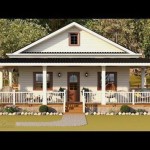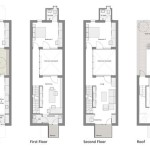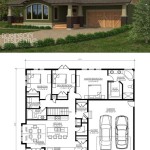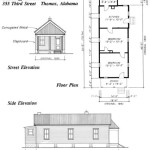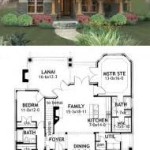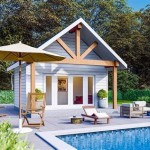An “open house plan” refers to a design concept where multiple rooms, such as the living room, dining room, and kitchen, are combined into one large, open space. This eliminates traditional walls and barriers, creating a sense of spaciousness and fluidity throughout the living area.
The open house plan has gained immense popularity over the years, particularly in contemporary architecture. It provides several benefits, including increased natural lighting, improved ventilation, and a more cohesive family environment. For example, an open house plan in a modern apartment may allow for seamless flow between the cooking, dining, and lounging areas, creating an inviting ambiance for both daily life and social gatherings.
In the following sections, we will explore the advantages and disadvantages of open house plans, discuss different design considerations, and provide insights into their suitability for various lifestyles and architectural styles.
Key points to consider about open house plans:
- Spacious and airy
- Improved natural lighting
- Enhanced ventilation
- Cohesive family environment
- Increased flexibility for furniture placement
- Improved sightlines
- Potential for noise and odor transfer
- Less privacy
These factors should be carefully evaluated when considering an open house plan to ensure it aligns with individual preferences and lifestyle.
Spacious and airy
One of the primary advantages of an open house plan is its ability to create a spacious and airy living environment. By removing traditional walls and barriers between rooms, this design concept opens up the space, allowing for a greater sense of volume and freedom of movement.
The absence of enclosed spaces promotes better air circulation throughout the living area, contributing to a healthier and more comfortable indoor environment. Ample natural light can also penetrate deeper into the home, reducing the reliance on artificial lighting and creating a brighter, more inviting ambiance.
The spaciousness afforded by an open house plan can be particularly beneficial for families with children or those who enjoy entertaining guests. The open layout allows for easy supervision of children while they play, fosters a sense of togetherness, and provides ample space for social gatherings.
Furthermore, the open and airy nature of this design concept can create a more relaxing and stress-free living environment. The absence of visual barriers and the increased natural light can contribute to a sense of well-being and tranquility.
Overall, the spacious and airy qualities of an open house plan offer numerous benefits, including improved air quality, increased natural light, a greater sense of freedom and flexibility, and a more comfortable and inviting living environment.
Improved natural lighting
Open house plans are renowned for their ability to maximize natural lighting, creating brighter and more inviting living spaces. Here are several key points that contribute to the improved natural lighting in open house plans:
- Elimination of walls and barriers: Traditional walls and barriers between rooms can obstruct the flow of natural light. By removing these barriers in an open house plan, more natural light can penetrate deeper into the home, illuminating all areas of the living space.
- Increased window space: Open house plans often feature large windows and glass doors that allow for ample natural light to enter the home. These large windows can be strategically placed to capture sunlight at different times of the day, ensuring a well-lit space throughout the day.
- Reflective surfaces: Open house plans often incorporate reflective surfaces, such as light-colored walls, glossy finishes, and mirrors, which help to bounce and distribute natural light throughout the space. This maximizes the use of available natural light, making the home feel brighter and more spacious.
- Clerestory windows: Clerestory windows are high windows placed near the ceiling that allow natural light to enter the home from above. These windows are particularly effective in open house plans, as they can provide additional natural light without compromising privacy or security.
The improved natural lighting in open house plans offers numerous benefits, including reduced reliance on artificial lighting, lower energy consumption, improved mood and well-being, and a more visually appealing living space.
Enhanced ventilation
Open house plans are designed to promote enhanced ventilation, creating a healthier and more comfortable indoor environment for occupants. Here are several key factors that contribute to the improved ventilation in open house plans:
- Increased airflow: Open house plans eliminate traditional walls and barriers between rooms, allowing for greater airflow throughout the living space. This increased airflow helps to circulate fresh air and remove stale air, reducing the risk of indoor air pollution and creating a more pleasant and healthy living environment.
- Cross-ventilation: Open house plans often feature multiple windows and doors located on opposite sides of the home. This allows for cross-ventilation, where fresh air can enter the home from one side and exit from the other, creating a continuous flow of fresh air throughout the space.
- Natural stack effect: Open house plans with high ceilings and clerestory windows can take advantage of the natural stack effect. Warm air rises, creating a natural draft that draws fresh air into the home from lower levels and exhausts stale air through higher openings.
- Reduced moisture accumulation: The increased airflow and ventilation in open house plans help to reduce moisture accumulation, which can lead to mold, mildew, and other indoor air quality issues. Good ventilation helps to remove excess moisture from the air, creating a healthier and more comfortable living environment.
The enhanced ventilation in open house plans offers numerous benefits, including improved indoor air quality, reduced risk of respiratory problems, a more comfortable living environment, and a healthier home for occupants.
Cohesive family environment
Open house plans are designed to foster a cohesive family environment by eliminating traditional barriers between rooms and creating a more open and connected living space. Here are several key points that contribute to the cohesive family environment in open house plans:
- Enhanced communication and interaction: Open house plans allow for easier communication and interaction between family members, as they can see and hear each other from different areas of the home. This can be especially beneficial for families with young children, as parents can keep an eye on their children while they play or do other activities in different parts of the house.
- Shared experiences and activities: Open house plans encourage shared experiences and activities, as family members can easily gather in the central living space to watch movies, play games, or simply spend time together. This shared space promotes a sense of togetherness and strengthens family bonds.
- Increased family involvement: Open house plans can increase family involvement in household tasks, as multiple family members can participate in activities such as cooking, cleaning, or setting the table in the shared living space. This can help to foster a sense of responsibility and cooperation within the family.
- Improved supervision and safety: Open house plans allow for improved supervision of children and other family members, as parents and caregivers can easily monitor their activities from different parts of the home. This can provide peace of mind and enhance the safety and well-being of family members.
The cohesive family environment created by open house plans offers numerous benefits, including improved communication, stronger family bonds, increased family involvement, and enhanced safety and well-being.
Increased flexibility for furniture placement
Open house plans offer increased flexibility for furniture placement, allowing homeowners to customize their living space to suit their unique needs and preferences. Here are several key points that contribute to the increased flexibility for furniture placement in open house plans:
- Removal of walls and barriers: Open house plans eliminate traditional walls and barriers between rooms, creating a large, open space that is not constrained by fixed room layouts. This allows homeowners to place furniture anywhere in the space, without being restricted by the boundaries of individual rooms.
- Multi-functional spaces: Open house plans often feature multi-functional spaces that can be used for a variety of purposes. For example, a central living area can be used for seating, dining, and entertaining, allowing homeowners to arrange furniture in a way that accommodates their specific needs and activities.
- Adaptability to changing needs: Open house plans can easily adapt to changing needs over time. As families grow or lifestyles change, homeowners can reconfigure the furniture layout to suit their current needs, without the need for major renovations or structural changes.
- Improved flow and circulation: The open layout of open house plans allows for improved flow and circulation throughout the living space. This makes it easier to move furniture around and create different configurations, as there are no obstacles or barriers to impede movement.
The increased flexibility for furniture placement in open house plans offers numerous benefits, including the ability to customize the living space to suit individual needs, adapt to changing circumstances, and create a more dynamic and versatile living environment.
Improved sightlines
Open house plans offer improved sightlines throughout the living space, creating a more open, airy, and connected environment. Here are several key points that contribute to the improved sightlines in open house plans:
- Elimination of walls and barriers: Open house plans eliminate traditional walls and barriers between rooms, creating a large, open space with unobstructed sightlines. This allows for clear views from one area of the home to another, enhancing the sense of spaciousness and connectivity.
- Increased natural light: Open house plans often feature large windows and glass doors that allow for ample natural light to enter the home. This natural light helps to illuminate the space and improve sightlines, making it easier to see and navigate throughout the home.
- Strategic placement of furniture and dcor: In open house plans, furniture and dcor can be strategically placed to enhance sightlines and create visual interest. For example, sofas and chairs can be arranged to face each other, creating a more inviting and conversational space. Artwork and decorative pieces can be placed to draw the eye and create focal points, adding depth and character to the space.
- Use of reflective surfaces: Open house plans often incorporate reflective surfaces, such as mirrors and glossy finishes, to bounce light around the space and improve sightlines. Mirrors can be placed strategically to create the illusion of more space and depth, while glossy finishes on furniture and walls can reflect light and enhance the overall brightness of the home.
Improved sightlines in open house plans offer numerous benefits, including a more spacious and airy living environment, enhanced natural light, improved visual connectivity, and a more inviting and visually appealing space.
Potential for noise and odor transfer
While open house plans offer numerous advantages, they also come with potential drawbacks, including the increased potential for noise and odor transfer between different areas of the home. Here are several key points to consider:
Noise transfer: Open house plans, by their very nature, reduce the physical barriers between different rooms, which can lead to increased noise transfer. Sounds from one area of the home, such as the kitchen or living room, can easily travel to other areas, including bedrooms and bathrooms. This can be particularly problematic for families with young children or those who value peace and quiet.
Odor transfer: Similar to noise, odors can also travel more easily in open house plans. Cooking smells from the kitchen, for example, can quickly spread throughout the home, potentially affecting other areas such as the living room or bedrooms. This can be a concern for those who are sensitive to odors or who prefer to keep different areas of the home separate for specific activities, such as cooking or entertaining.
Mitigating noise and odor transfer: While the potential for noise and odor transfer is a consideration in open house plans, there are several strategies that can be employed to mitigate these issues:
- Strategic placement of furniture and dcor: Furniture, rugs, and other dcor items can be used to absorb and block noise. Placing a large sofa or bookcase in strategic locations can help to reduce noise transmission between different areas of the home.
- Use of soundproofing materials: Soundproofing materials, such as acoustic panels or curtains, can be installed in areas where noise control is a concern. These materials can help to absorb and deflect sound, reducing noise transfer between rooms.
- Proper ventilation: Proper ventilation is essential for controlling odor transfer in open house plans. Installing range hoods in the kitchen and exhaust fans in bathrooms can help to remove cooking odors and other unpleasant smells from the air.
By carefully considering the potential for noise and odor transfer and implementing appropriate mitigation strategies, homeowners can enjoy the benefits of an open house plan while minimizing these potential drawbacks.
Less privacy
Another potential drawback of open house plans is the reduced privacy they offer compared to traditional homes with separate rooms. In open house plans, activities and conversations in one area of the home can be easily heard and observed from other areas, which may not be ideal for those who value privacy.
For example, if someone is watching a movie in the living room, their activity can be easily seen and heard from the kitchen or dining area. Similarly, conversations in the kitchen can be overheard in other parts of the home. This lack of privacy can be a concern for those who prefer to have more separation between different activities and conversations.
Additionally, open house plans can limit the ability to have private conversations or engage in activities that require solitude. For example, if someone needs to make a phone call or have a private conversation, they may need to find a secluded spot in the home, which may not always be convenient or available.
Furthermore, open house plans can reduce the sense of privacy in bedrooms and bathrooms, as they may be more exposed to noise and activity from other areas of the home. This can be a concern for those who value privacy in their personal spaces.
However, it is important to note that the level of privacy in an open house plan can vary depending on the specific layout and design of the home. Some open house plans may incorporate features that enhance privacy, such as separate nooks or alcoves for private activities, or soundproofing materials to reduce noise transfer between different areas of the home.










Related Posts

